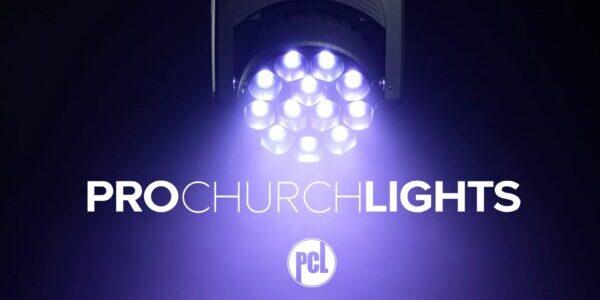This post sponsored by the book, Lighting Design for Modern Houses of Worship. Get it on Amazon.
Duke DeJong walks you through choosing the right LED stage lights based on the beam size.
I get a lot of calls about LED stage lighting. The number one thing I hear is, “I’m looking for some LED stage lights, what do you like?” It’s a simple question that requires a much more involved question: What are you trying to accomplish with the light? Beam size, brightness, form factor, and color rendering are all critical factors to consider when choosing a fixture. Today we’re going to look at the first aspect you should consider: beam size.
Before you worry too much about the numbers, it’s important to have an idea of what you hope to light with the fixture. A fixture with a narrower beam works great to light a person or surface without having light bleed everywhere. But it’s terrible when you’re trying to cover a large surface. If your lights are going to hang 20’ above your stage and you’re trying to top light your band, are you looking to cover 3’ circles or more like 9’ circles? Let’s say we were looking at three LED fixtures for your room and one has a 10-degree beam, one a 25-degree beam, and the last a 40-degree beam. Based on the generally accepted beam calculation equation below, from 20’ (distance) you could expect the following rough beam sizes:
BEAM WIDTH = ANGLE x .018 x DISTANCE
- 10 degrees –3.5’ beam width
- 25 degrees –9’ beam width
- 40 degrees –14’ beam width
Now, every LED stage lighting fixture will have slight variations, but you can see that a 10-degree fixture probably won’t work so well as top light if your fixture height is only 20’ away from your subjects. In fact that 10-degree fixture would need to approach a 50’ throw in order to have a roughly 9’ diameter. You can see why it’s important to have an idea of what you want the light to do before choosing them!
There really is no one-size-fits-all here. You may need 25-degree fixtures for your top light and 40-degree fixtures to wash your walls or stage sets.
If you have a few dozen 25-degree fixtures and you need some to wash a wider surface, you can get diffusion sheets to widen your beam spread on those fixtures.
It’s important to note that the narrower fixture will appear brighter, especially over distance. In other words, a wider beam spread will cover more area but will not have quite as much punch as the narrower fixture, which is more concentrated. If you’re trying to wash a 15-20’ wall with color, a wider fixture likely makes sense, as you’re not pushing it too far. If you need to wash a 30-40’ wall however, using tighter beams and more of them will allow your light to maintain sufficient brightness over distance.
So when choosing new LED stage lighting fixtures, the first thing you need to do is to develop a concept of what you’re trying to do. Figure out how much area you want to wash and from what distance you are going to shoot the light from. From there, choose from a narrow (5-20 degrees), medium (20-40 degrees) or wide (40-65 degrees) beam spread that will make your LED stage lighting fixture purchase a successful one.
Duke is passionate about equipping the next generation of ministry leaders, especially those serving churches with technology. He serves as Church Relations Director for CCI Solutions, a design build technology solutions provider. Follow Duke on Twitter: @dukedejong











Great article! You’ve given me the words to help explain this to others. Plus, I now have an equation for figuring out beam width in our auditorium without having to reach for a pencil and graph paper!